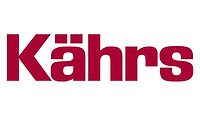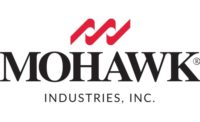Mohawk Industries announced net sales increased 6.7% for the second quarter of 2022 to $3.2 billion, compared with $3 billion in the second quarter of 2021. Net earnings for the quarter were $280 million and diluted earnings per share (EPS) of $4.40 compared to net earnings were $336 million and EPS was $4.82.
Commenting on Mohawk Industries’ second quarter performance, Chairman and CEO Jeffrey S. Lorberbaum stated:
“During the quarter, sales grew in all of our segments, with our top line results benefiting from price increases, enhanced product mix, improvements in commercial and contributions from our small acquisitions. As the quarter progressed, the global economic environment became increasingly challenging, and our organization implemented additional actions to support our performance. Our operating income for the quarter was in line with our expectations, even as material, energy and transportation inflation remained a significant headwind and our translated results were impacted by the strengthening U.S. dollar.
“Over the past 18 months, all of our businesses have faced extraordinary inflation, and we have instituted multiple price increases to pass through these higher costs. We are also taking numerous operational actions, including cost controls, productivity improvements, mix and logistics enhancements. Across all our markets, inflation is causing changes in consumer discretionary spending. U.S. housing sales have been impacted more than our other markets as mortgage rates have risen faster. Unlike past economic cycles, housing demand exceeds available supply and foreclosures are not an issue. In Europe, interest rates have not risen as much as in the U.S., though consumer discretionary spending is being eroded by energy and other inflation, which is impacting demand. In most of our regions, investments in commercial new construction and remodeling remain solid. Both commercial projects that were deferred due to the pandemic and new projects are being initiated in greater numbers as the sector continues to strengthen."'
The North American flooring segment reported net sales were $1.1 billion, an increase of 1.7% , and the segment's operating margin was 9.1% as a result of higher inflation and lower volumes, partially offset by pricing and mix improvements and productivity.
The company reports that builder sales remained strong in most markets, and an increased number of commercial renovation and new construction projects were also initiated.
"Most of our geographies have experienced some softening in residential activity as inflation and higher interest rates affected remodeling investments," Lorberbaum said.
During the second quarter the company announced $440 million in new acquisitions, with the largest being the agreement to acquire Vitromex, a ceramic manufacturer in Mexico. In early July, the company completed the acquisition of Foss Floors, a U.S. needle punch flooring manufacturer.
Other highlights include:
- LVT sales continued to grow, and as the company reported fewer material disruptions
- The new west coast LVT plant has begun shipping to customers
- Sales of waterproof laminate collections are increasing in the specialty retail and new construction channels, though inventory adjustments in home centers impacted sales.
- A new laminate manufacturing line continues to ramp up to targeted production levels
- As the commercial sector rebounds, sales and margins of carpet tile and commercial LVT are improving.
- As residential carpet volumes declined due to softening markets and inventory reductions, the company is aligning capacity with demand, reducing expenses, and announcing additional price increases to counter inflation.
- The rug business is concentrated with major national retailers, and during the quarter they all dramatically cut orders to reduce inventory as their sales forecasts weakened.
Lorberbaum said the company anticipates softening demand and increased pressure on margins going forward and is taking actions across the enterprise to adjust to changing market conditions:
“Mohawk has successfully managed through economic cycles many times before. Over the long term, flooring grows at a faster rate than the overall economy. A deficit in housing stock requires significant additional construction in most regions, with U.S. housing demand exceeding supply by an estimated five million units and over 20 million homes between 20 and 40 years old that are in need of renovation. Our business is well positioned to benefit from long-term growth in new home construction, residential remodeling, and commercial projects. We have a strong balance sheet that supports growing the business through internal investments as well as acquisitions and stock buybacks. We will enhance the performance of our acquisitions and will continue to seek opportunities in new products and geographies. We remain optimistic about Mohawk’s future, and the actions we are taking today will increase our sales and improve our future results.”





